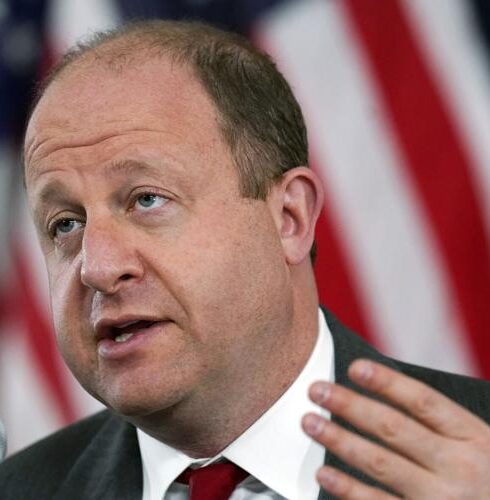
First responders salute as an American flag is unfurled at the Pentagon at sunrise to commemorate the 2001 terrorist attack on the Pentagon, during an observance ceremony Sept. 11, 2023. Credit: AP
United States officials have recently issued warnings of a “high risk” from domestic and foreign terrorists for the coming year, as part of a new threat assessment released recently by the Department of Homeland Security.
The report points to the prevalence of conspiracy theories, personal grievances and what it describes as “enduring racial, ethnic, religious, and anti-government ideologies,” often shared in online forums, all serving to motivate small groups and individuals within the U.S.
The agency released a new report called the Homeland Threat Assessment, where officials said they expected the threat of violence from people radicalized in the U.S. to stay high, but largely unchanged, over the coming year, warning of lone offenders or small group attacks “that occur with little warning.” The report also said the rise in AI tools will likely help foreign governments continue to spread misinformation and sow distrust.
“Sharing information with the public on the threats we face is a vital part of protecting our homeland from today’s evolving security challenges,” DHS Secretary Alejandro Mayorkas said in a statement.
Part of the report also warned that prominent foreign terror groups, like al-Qaeda and the Islamic State, are actively seeking to rebuild their brands and will be looking to inspire followers to carry out acts of violence.
“Foreign terrorists continue to engage with supporters online to solicit funds, create and share media, and encourage attacks,” according to the 2024 Homeland Threat Assessment, calling out the Islamic State’s Afghan affiliate, also known as IS-Khorasan or ISIS-K.
IS-Khorasan “has garnered more prominence through a spate of high-casualty attacks overseas and English‐language media releases that aim to globalize the group’s local grievances among Western audiences,” the report says.
Additionally, the new assessment warns that foreign terrorists appear to be probing the U.S. for soft spots.
The HTA provides the public and the Department’s partners with a detailed report on the most pressing threats to the United States as part of the Biden Administration’s continuing effort to assist them in preparing for, preventing, and responding to the diverse and dynamic threat environment.
Going forward, the annual HTA will serve as the primary mechanism for sharing the terrorism threat level, which has previously been done through the National Terrorism Advisory System (NTAS). The issuance of NTAS advisories will be reserved for situations where DHS needs to alert the public about a specific or imminent terrorist threat or about a change in the terrorism threat level. This shift will provide the public and DHS partners both in-depth annual reports and urgent updates, as needed.
Delving further into the report, it states that Individuals with terrorism connections are interested in using established travel routes and permissive environments to facilitate access to the United States.
Some U.S. lawmakers have voiced growing concern, especially after an August report by CNN that more than a dozen migrants from Uzbekistan traveled to the U.S. southern border to seek asylum with the help of a smuggler connected to IS.
“Just when it seems President Biden’s border crisis can’t get any worse, it does,” said Republican Michael McCaul, chairman of the House Foreign Affairs Committee, in a statement last month.
“The federal government is now scrambling to find individuals who traveled and entered the U.S. with help from an ISIS-linked smuggler,” McCaul added. “It is way past time for this administration to secure the border and protect Americans from criminals and terrorists seeking to do us harm.”
The latest assessment is largely consistent with a National Terrorism Advisory System bulletin that DHS issued in May, when it warned the U.S. was stuck in a “heightened threat environment.”
But the warnings about IS-Khorasan and potential attempts by foreign terrorists to infiltrate the U.S. stand out in the wake of recent statements by DHS officials and those from other U.S. agencies that seemingly sought to reassure Americans about their safety.
In March, for example, DHS counterterrorism coordinator Nicholas Rasmussen said the possibility of an attack resembling the one on Sept. 11, 2001, when al-Qaeda terrorists hijacked four aircraft and killed nearly 3,000 people, was “almost inconceivable.”
The report marks a shift on how DHS plans to alert the public about potential threats, something the department previously did through National Terrorism Advisory System (NTAS) bulletins.
“In the future, the issuance of NTAS bulletins will be reserved for situations where we need to alert the public about a specific or imminent terrorist threat or about a change in the terrorism threat level,” it says.







